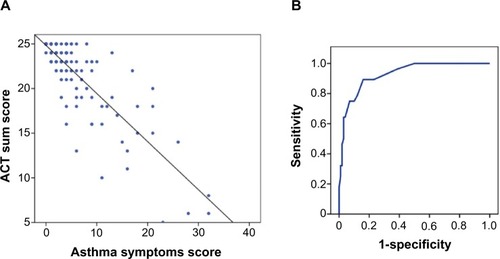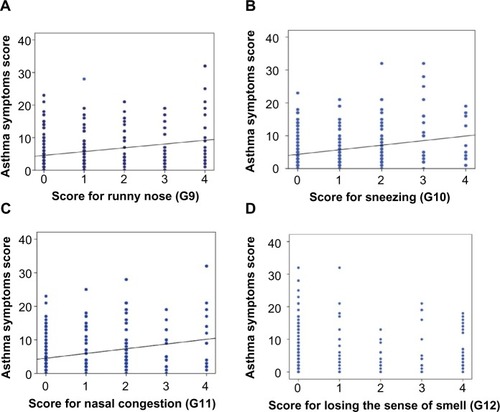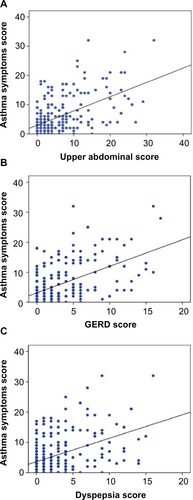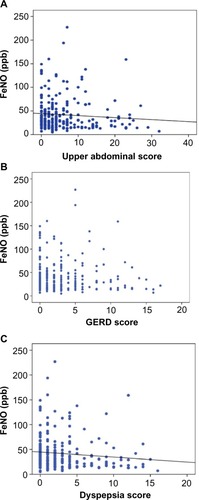Figures & data
Table 1 The G scale: the frequency scale for the symptoms of asthma and rhinosinusitis developed in Gunma
Figure 1 The relationship between asthma symptoms scores calculated by the G scale and ACT sum score.
Abbreviations: ACT, asthma control test; G scale, frequency scale for the symptoms of asthma and rhinosinusitis developed in Gunma.

Figure 2 The relationship between FeNO and symptoms evaluated by the G scale.
Abbreviations: FeNO, fractional exhaled nitric oxide; ppb, parts per billion; G scale, frequency scale for the symptoms of asthma and rhinosinusitis developed in Gunma.

Figure 3 The relationship between asthma symptoms and rhinosinusitis symptoms.
Abbreviation: G scale, frequency scale for the symptoms of asthma and rhinosinusitis developed in Gunma.

Figure 4 The relationship between upper abdominal symptoms and asthma symptoms.
Abbreviation: GERD, gastroesophageal reflux disease.

Figure 5 The relationship between upper abdominal symptoms and FeNO.
Abbreviations: FeNO, fractional exhaled nitric oxide; ppb, parts per billion; GERD, gastroesophageal reflux disease.

